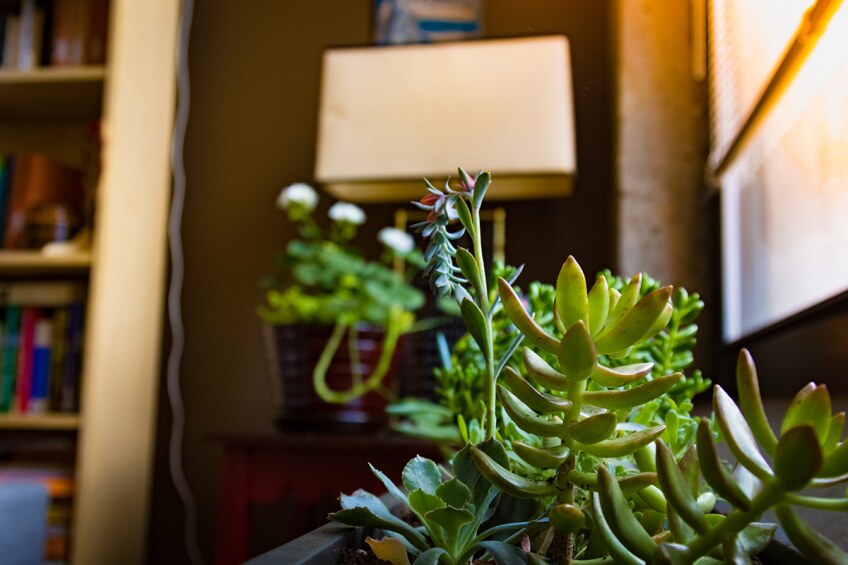How to Unwind After Teaching Online

Teaching and managing a classroom requires an extensive amount of cognitive energy. Teachers must be “on” all day in order to create learning experiences, attend to their students’ needs, gauge their understanding and provide emotional support, all while modeling good behavior. Unfortunately, these cognitive demands have not diminished for those who teach online.
Online teaching requires a level of preparation, motivation, observation and documentation that may surpass the amount of work that is needed for in-person teaching. On top of the extra labor, those who teach online are at risk for common difficulties that come with sitting at a computer all day. Bodily pains, feeling disconnected from the world and an altered sense of time are just a few challenges teachers are facing. Due to this, teaching can feel depleting, even for those who love their career. Therefore, moments spent not teaching should feel restorative in order to create a balance between life and work. Finding a restorative routine that allows you to unwind after teaching online is a personal journey. These suggestions can help get you started:
Alleviate the Mind
A teacher’s mind often occupies the present, past and the future. They might assess a child’s current understanding, reflect back on teaching strategies they used last year and start prepping for the next subject all within the same hour. Although this skill can be beneficial during work, it can be the exact opposite when trying to unwind after teaching. Being present means fully focusing on the now. When you focus on the now after work, you’re truly experiencing the activities that help you to unwind. However, the mind is quick to wander and when it does, we can lose track of time and spend hours in our mind and not in the moment. To help bring yourself back to the present moment, try practicing these tips:
- Be nice to yourself when your mind wanders. Allow thoughts to pass with gentleness and bring your attention to your breath. It is incredibly difficult to voluntarily focus on breathing while thinking of anything else! Practice inhaling for 3-4 seconds through your nose and exhaling all of the air out through your nose. It can be helpful to view exhaling as a symbolic way to let go of any thoughts that prevent you from being present.
- Indulge in all of the sensory experiences of the activities you engage in. While you eat, shower and get cozy on the couch, pay attention to the sensations of touch, sound, smell and taste.
- We often fall into routine after work. However, being present means moving in ways that best support your wants and needs in the current moment. Ask yourself “what is it that I need or want right now?” multiple times throughout the evening.
Check In with Your Body
Sitting at the computer for long periods of time puts the body under stress. The body can quickly slouch the shoulders, protrude the neck and keep hips in a fixed position at a desk. Checking in with your body means taking the time to do a full body assessment to determine what your body might need. There is no right way to assess the body, but these tips might be helpful:
- Close your eyes and draw your attention to the top of your head.
- Mentally scan each surface of your head, face and neck.
- Notice if there are any areas that feel uncomfortable, tight, or in pain.
- Keep note of these areas as you continue to check in with the rest of your body.
- Through this process you might realize other things about your current state including being hungry, emotionally tired, having a headache, etc.
After a body assessment is completed the next step is to determine the best way to take care for yourself. When finding ways to care for these troubled areas, try to lead with your intuition. It can be helpful to break down solutions into categories based on the senses:
- Touch (ex: massage, warm shower, heat pack, etc.)
- Taste (ex: comforting hot meal, etc.)
- Sight (ex: guided imagery, turning on or off the lights, etc.)
- Hearing (ex: listening to music, hearing ASMR, etc.)
- Smell (ex: using essential oils, smelling flowers or soil, etc.)
- Movement (ex: stretching, running, yoga, etc.)
Visit Your Favorite Nature Space
After spending hours attending to a screen, it can be helpful for teachers to surround themselves with natural beauty that allows the mind to rest. For many, nature has a profound way of calming the body and the mind. According to the Attention Restoration Theory, nature captures our attention in an involuntary way. Due to this, we are effortlessly drawn to the world of plants, water and animal life. Based on this theory, our minds are also capable of voluntary and/or directed attention.
Directed attention occurs when we have to use cognitive effort to attend in a non-natural space (like a virtual classroom), which can lead to mental fatigue. Luckily, natural spaces “replenish” the mind that has been working hard to voluntarily attend.[i]

The natural space you choose should be in a convenient location that doesn’t take too much effort to get to. This could be a local park, community garden, or even inside your home! If you are creating a natural space indoors, choose plants that draw you in with their colors, patterns and textures. Scared of becoming a first-time plant parent? Pothos, aloe, spider plants and succulents like the jade plant are great starters. You can also incorporate other natural elements around your plants like rocks, wood and even a small indoor water fountain. Since the time spent in this space should feel undemanding, allow yourself to look, touch, smell and move in whichever way feels right.
Teach Your Students How to Unwind, Too
Children need help with unwinding from online class, too. There are extensive amounts of research available that highlight how being mindful can positively impact young people. Luckily, the tips outlined here are just as accessible to children as they are to adults. Incorporating these strategies right before class ends can help everyone manage the stress associated with online teaching. If your students need a hands-on activity to help with connecting to their mind and body, then the following article suggestions could help:
[i] Berman, M. G., Jonides, J., Kaplan, S. (2008). The cognitive benefits of interacting with nature. Psychological science, 19(12), 1207-1212.






